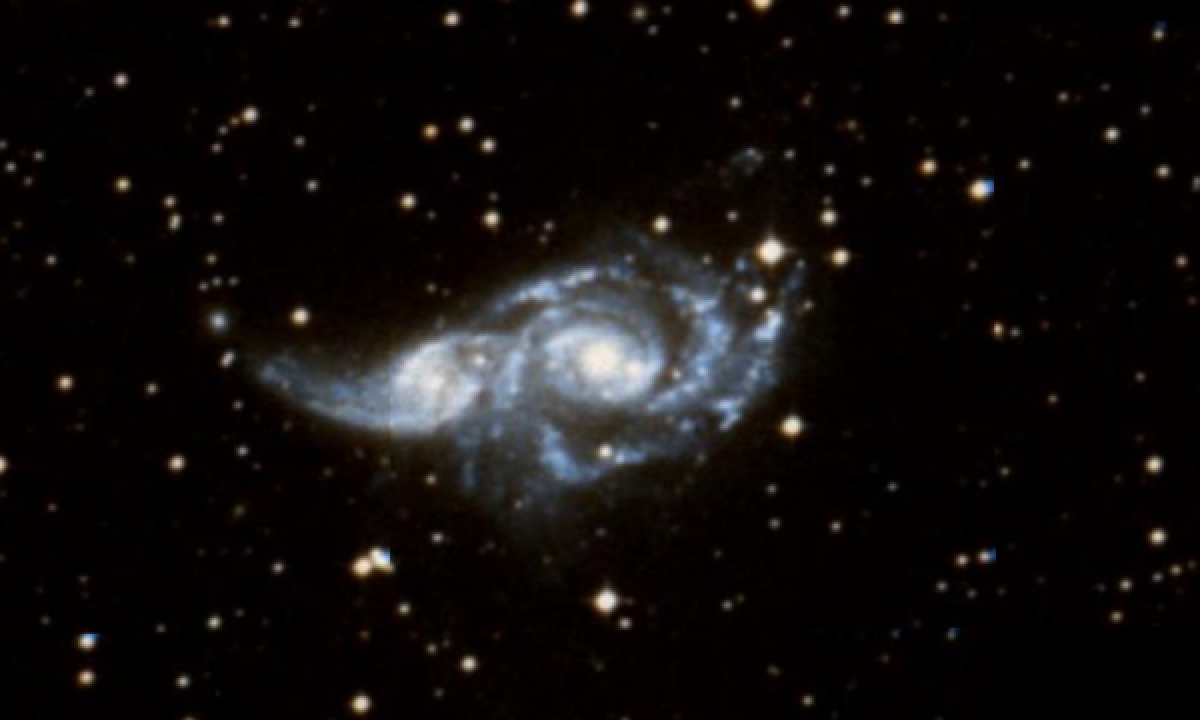The New General Catalogue of Nebulae and Clusters of Stars (abbreviated as NGC) is a catalogue of deep-sky objects compiled by John Louis Emil Dreyer in 1888. The NGC contains 7,840 objects, known as the NGC objects. It is one of the largest comprehensive catalogues, as it includes all types of deep space objects, including galaxies, star clusters, emission nebulae and absorption nebulae.
Know more about NGC
NGC 2207
NGC 2207 and IC 2163 are a pair of colliding spiral galaxies about 80 million light-years away in the constellation Canis Major. NGC 2207 was discovered by British astronomer John Herschel on 24 January 1835, while IC 2163 was discovered by Herbert Howe on 11 February 1898. The larger spiral, NGC 2207, is classified as an intermediate spiral galaxy exhibiting a weak inner ring structure around the central bar. The smaller companion spiral, IC 2163, is classified as a barred spiral galaxy that also exhibits a weak inner ring and an elongated spiral arm that is likely being stretched by tidal forces with the larger companion. Both galaxies contain a vast amount of dust and gas, and are beginning to exhibit enhanced rates of star formation, as seen in infrared images. NGC 2207 is in the process of colliding and merging with IC 2163. But unlike the Antennae or the Mice Galaxies, they are still two separate spiral galaxies. They are only in the first step of colliding and merging, with NGC 2207 being in the process of tidally stripping IC 2163. Soon they will collide, probably looking a bit more like the Mice Galaxies. In about a billion years' time they are expected to merge and become an elliptical galaxy or perhaps a disk galaxy.
More Images:

Sources:
Wikipedia Page: NGC 2207
NGC 2207 at In-The-Sky website
